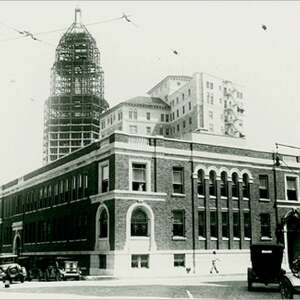Throckmorton in the 1940 Census: Unraveling the Tapestry of a Bygone Era

The 1940 United States Census is a treasure trove of information that provides a vivid snapshot of American life during a pivotal moment in history. Among the millions of names and details recorded, one name stands out — Madison Throckmorton. Who was this individual, and what can we learn from their entry in the 1940 Census?
Madison Throckmorton was not a household name, but within the pages of the 1940 Census, their story begins to unfold. In a nation recovering from the Great Depression and on the brink of entering World War II, every name in the census tells a unique tale of resilience, struggle, and hope. Madison’s story is no exception.
The Throckmorton family, like countless others, navigated the challenges of the era. The 1940 Census entry for Madison Throckmorton provides a glimpse into their world — their family structure, occupation, residence, and more. Each piece of information is a thread that, when woven together, forms a tapestry of a particular time and place.
Madison Throckmorton’s census entry reveals not only the basics of their existence but also sheds light on the broader social and economic context of the 1940s. Understanding the circumstances in which they lived allows us to appreciate the intricacies of daily life during this transformative period in American history.
One crucial aspect of the 1940 Census was the inclusion of new questions that provided a deeper understanding of the population. These questions covered topics such as employment status, income, education, and even migration patterns. For Madison Throckmorton, these details offer a window into their socioeconomic standing and the challenges they may have faced.
Occupation played a significant role in the lives of individuals during the 1940s, shaping their identities and influencing their communities. The census entry for Madison Throckmorton likely contains information about their occupation — whether they were part of the workforce, the nature of their job, and the industry they contributed to. Exploring this aspect can help us appreciate the diversity of professions that existed during that era.
In addition to occupation, the census captured details about education, revealing the level of formal schooling individuals had completed. Education was a powerful tool for advancement in the 1940s, and Madison Throckmorton’s educational background, as indicated in the census, can provide insights into the opportunities available to them and their aspirations for the future.
Residence is another key element in Madison Throckmorton’s census entry. Where they lived can provide clues about the community they were part of, the economic conditions of the area, and the urban or rural nature of their surroundings. Understanding the geography of Madison’s life adds a spatial dimension to their story, connecting them to a specific time and place in the vast tapestry of American history.
Family structure is a fundamental aspect of the 1940 Census. Madison Throckmorton’s household composition, including information about parents, siblings, and other relatives, allows us to reconstruct the social fabric of their lives. It helps us appreciate the interconnectedness of families and communities during this period.
Beyond the immediate family, the census also captured information about neighbors, providing a broader context for Madison Throckmorton’s life. Exploring the relationships and connections within the community can offer a more nuanced understanding of the social dynamics at play.
The 1940 Census, while a valuable historical document, is not without its limitations. It reflects a specific moment in time, and its accuracy depends on the completeness and honesty of the responses. Factors such as memory lapses, cultural biases, and the evolving nature of family structures may introduce nuances and challenges in interpreting the data.
As we delve into Madison Throckmorton’s entry in the 1940 Census, it is essential to approach the information with a critical eye, recognizing both the strengths and limitations of this historical record. The census is a snapshot, frozen in time, and while it provides a wealth of information, it cannot capture the full richness and complexity of an individual’s life.
In conclusion, Madison Throckmorton in the 1940 Census offers a captivating journey into a specific moment in American history. The census entry serves as a portal, inviting us to explore the details of their life and, by extension, the lives of countless others who shared in the challenges and triumphs of the 1940s. Through this exploration, we gain a deeper appreciation for the resilience of individuals and communities during a period marked by uncertainty and change. Madison Throckmorton’s story, woven into the fabric of the 1940 Census, is a testament to the diversity and strength of the American experience.
-
Who was Madison Throckmorton?
- Madison Throckmorton was an individual recorded in the 1940 United States Census. The census provides information about their demographic details, family structure, occupation, and residence.
-
What information does the 1940 Census provide about Madison Throckmorton?
- The census includes details about Madison’s family members, their occupations, education levels, and the nature of their residence. It offers a comprehensive snapshot of their life in 1940.
-
What was the socioeconomic context of Madison Throckmorton’s life in the 1940s?
- The census provides insights into Madison’s occupation, income, and educational background, offering a glimpse into the socioeconomic challenges and opportunities they may have faced during that era.
-
How can Madison Throckmorton’s occupation be determined from the census?
- Madison’s occupation, industry, and employment status are likely documented in the census. This information can shed light on the nature of their work and the economic conditions of the time.
-
What role did education play in Madison Throckmorton’s life?
- The census records educational levels, providing information about Madison’s formal schooling. This can offer insights into their access to education and the potential impact on their professional and personal development.
-
Where did Madison Throckmorton live, and what does it reveal about their life?
- The census includes details about Madison’s residence, allowing for an exploration of the geographical and community context of their life. It provides information about urban or rural settings and the socioeconomic conditions of the area.
-
How does Madison Throckmorton’s family structure contribute to the narrative?
- The census entry includes information about Madison’s immediate family, such as parents and siblings. Exploring family dynamics helps paint a more complete picture of their social connections and support systems.
-
What insights can be gained from Madison Throckmorton’s neighbors in the census?
- The census captures information about neighbors, offering a broader view of the community. Understanding these relationships contributes to a more nuanced understanding of Madison’s social environment.
-
What are the limitations of interpreting Madison Throckmorton’s entry in the 1940 Census?
- The census is a historical document with potential limitations, including the accuracy of responses, cultural biases, and the evolving nature of family structures. Interpretations should consider these factors.
-
How can one use Madison Throckmorton’s census entry to understand the broader historical context of the 1940s?
- Madison’s entry provides a microcosm of life in the 1940s. Exploring their details allows for a broader understanding of the challenges, aspirations, and societal changes that characterized this transformative period in American history.




